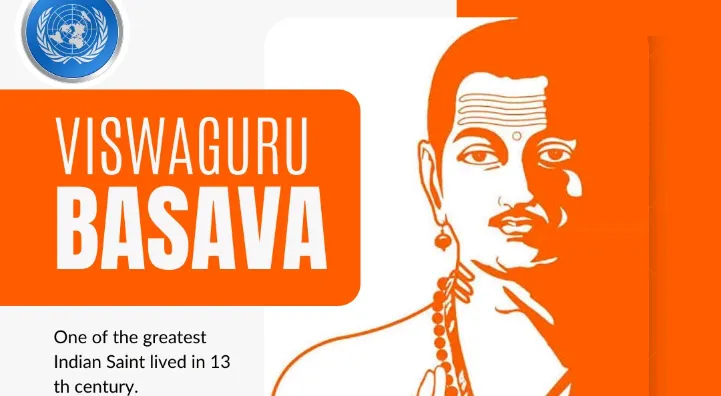Films and AI technologies
Copyright laws protect foreign films and series in much the same way they protect domestic content. When a foreign film or series is created, it is automatically granted copyright protection in most countries that are signatories to international copyright treaties, such as the Berne Convention. This protection gives the creators exclusive rights to reproduce, distribute, perform, and adapt their work.
If someone wants to use or distribute a foreign film or series in another country, they typically need to obtain the appropriate rights from the copyright holders. This can involve licensing agreements, distribution deals, or other arrangements negotiated between the rights holders and the parties interested in using or distributing the content.
The specific process for obtaining rights to a foreign film or series can vary depending on factors such as the country of origin, the distribution rights already held by other parties, and the terms negotiated between the parties involved. In many cases, production companies, distributors, or streaming platforms handle the acquisition of rights for foreign content through licensing agreements with the copyright holders.
AI technologies are increasingly being used to create dubbing for films in different languages, offering several advantages in terms of efficiency and accuracy. Here are some of the key AI technologies utilized in this process:
1. **Speech-to-Text (STT)**: AI-powered STT systems convert spoken dialogue into written text. This technology is used to transcribe the original dialogue in the film accurately, serving as the foundation for the dubbing process.
2. **Machine Translation (MT)**: MT algorithms translate the transcribed dialogue from the original language into the desired target language. While MT has improved significantly, human post-editing is often necessary to ensure grammatical correctness and cultural nuances.
3. **Voice Synthesis**: AI voice synthesis, also known as text-to-speech (TTS), generates synthetic speech in the target language based on the translated script. These systems use neural networks to mimic human speech patterns and intonation.
4. **Voice Conversion**: Voice conversion algorithms modify the synthetic speech to match the characteristics of specific actors or voice talents. This process can adjust pitch, tone, and other vocal qualities to create a more natural and convincing dub.
5. **Lip-syncing Algorithms**: AI-driven lip-syncing technology ensures that the dubbed dialogue matches the lip movements of the original actors as closely as possible. This involves analyzing the visual cues in the video and synchronizing the audio accordingly.
6. **Quality Assessment**: AI can also assist in quality assessment by analyzing the coherence, fluency, and naturalness of the dubbed dialogue. This helps identify and rectify any discrepancies or errors in the final output.
By leveraging these AI technologies, film studios and dubbing companies can expedite the localization process, reduce costs, and maintain a consistent level of quality across different language versions of the film. However, human supervision and fine-tuning remain essential to ensure the cultural appropriateness and emotional resonance of the dubbed content.
The cost and time savings with AI technologies for film making and dubbing can vary depending on factors such as the complexity of the project, the quality of AI tools used, and the specific tasks being automated. Generally, AI can significantly reduce production costs by automating repetitive tasks, such as video editing, special effects rendering, and script analysis. This can result in savings on labor, equipment, and post-production expenses.
In terms of time savings, AI can expedite various aspects of the filmmaking process, such as generating storyboards, identifying potential casting options, and even predicting audience preferences. Similarly, in dubbing, AI technologies can accelerate the localization process by automating tasks like lip-syncing, voice modulation, and language translation.
However, it's important to note that while AI can streamline certain tasks, it may also require an initial investment in training, customization, and integration with existing workflows. Additionally, human oversight and creative input are still crucial to ensure the quality and authenticity of the final product.
Overall, while AI technologies have the potential to save both time and costs in film making and dubbing, the extent of these savings will depend on various factors and the specific implementation of AI tools within the production process.
Film making and dubbing AI technologies have been evolving rapidly, offering various tools and capabilities to filmmakers and studios. AI-driven solutions can streamline the filmmaking process by automating tasks like video editing, special effects generation, and even scriptwriting. In dubbing, AI technologies can assist in lip-syncing, voice modulation, and language translation, making it easier to localize content for different audiences. These technologies can enhance efficiency, reduce production costs, and improve the overall quality of films and dubbed content. However, they also raise ethical questions about job displacement and the authenticity of human creativity and expression.
If someone wants to use or distribute a foreign film or series in another country, they typically need to obtain the appropriate rights from the copyright holders. This can involve licensing agreements, distribution deals, or other arrangements negotiated between the rights holders and the parties interested in using or distributing the content.
The specific process for obtaining rights to a foreign film or series can vary depending on factors such as the country of origin, the distribution rights already held by other parties, and the terms negotiated between the parties involved. In many cases, production companies, distributors, or streaming platforms handle the acquisition of rights for foreign content through licensing agreements with the copyright holders.
AI technologies are increasingly being used to create dubbing for films in different languages, offering several advantages in terms of efficiency and accuracy. Here are some of the key AI technologies utilized in this process:
1. **Speech-to-Text (STT)**: AI-powered STT systems convert spoken dialogue into written text. This technology is used to transcribe the original dialogue in the film accurately, serving as the foundation for the dubbing process.
2. **Machine Translation (MT)**: MT algorithms translate the transcribed dialogue from the original language into the desired target language. While MT has improved significantly, human post-editing is often necessary to ensure grammatical correctness and cultural nuances.
3. **Voice Synthesis**: AI voice synthesis, also known as text-to-speech (TTS), generates synthetic speech in the target language based on the translated script. These systems use neural networks to mimic human speech patterns and intonation.
4. **Voice Conversion**: Voice conversion algorithms modify the synthetic speech to match the characteristics of specific actors or voice talents. This process can adjust pitch, tone, and other vocal qualities to create a more natural and convincing dub.
5. **Lip-syncing Algorithms**: AI-driven lip-syncing technology ensures that the dubbed dialogue matches the lip movements of the original actors as closely as possible. This involves analyzing the visual cues in the video and synchronizing the audio accordingly.
6. **Quality Assessment**: AI can also assist in quality assessment by analyzing the coherence, fluency, and naturalness of the dubbed dialogue. This helps identify and rectify any discrepancies or errors in the final output.
By leveraging these AI technologies, film studios and dubbing companies can expedite the localization process, reduce costs, and maintain a consistent level of quality across different language versions of the film. However, human supervision and fine-tuning remain essential to ensure the cultural appropriateness and emotional resonance of the dubbed content.
The cost and time savings with AI technologies for film making and dubbing can vary depending on factors such as the complexity of the project, the quality of AI tools used, and the specific tasks being automated. Generally, AI can significantly reduce production costs by automating repetitive tasks, such as video editing, special effects rendering, and script analysis. This can result in savings on labor, equipment, and post-production expenses.
In terms of time savings, AI can expedite various aspects of the filmmaking process, such as generating storyboards, identifying potential casting options, and even predicting audience preferences. Similarly, in dubbing, AI technologies can accelerate the localization process by automating tasks like lip-syncing, voice modulation, and language translation.
However, it's important to note that while AI can streamline certain tasks, it may also require an initial investment in training, customization, and integration with existing workflows. Additionally, human oversight and creative input are still crucial to ensure the quality and authenticity of the final product.
Overall, while AI technologies have the potential to save both time and costs in film making and dubbing, the extent of these savings will depend on various factors and the specific implementation of AI tools within the production process.
Film making and dubbing AI technologies have been evolving rapidly, offering various tools and capabilities to filmmakers and studios. AI-driven solutions can streamline the filmmaking process by automating tasks like video editing, special effects generation, and even scriptwriting. In dubbing, AI technologies can assist in lip-syncing, voice modulation, and language translation, making it easier to localize content for different audiences. These technologies can enhance efficiency, reduce production costs, and improve the overall quality of films and dubbed content. However, they also raise ethical questions about job displacement and the authenticity of human creativity and expression.
Related Stories





